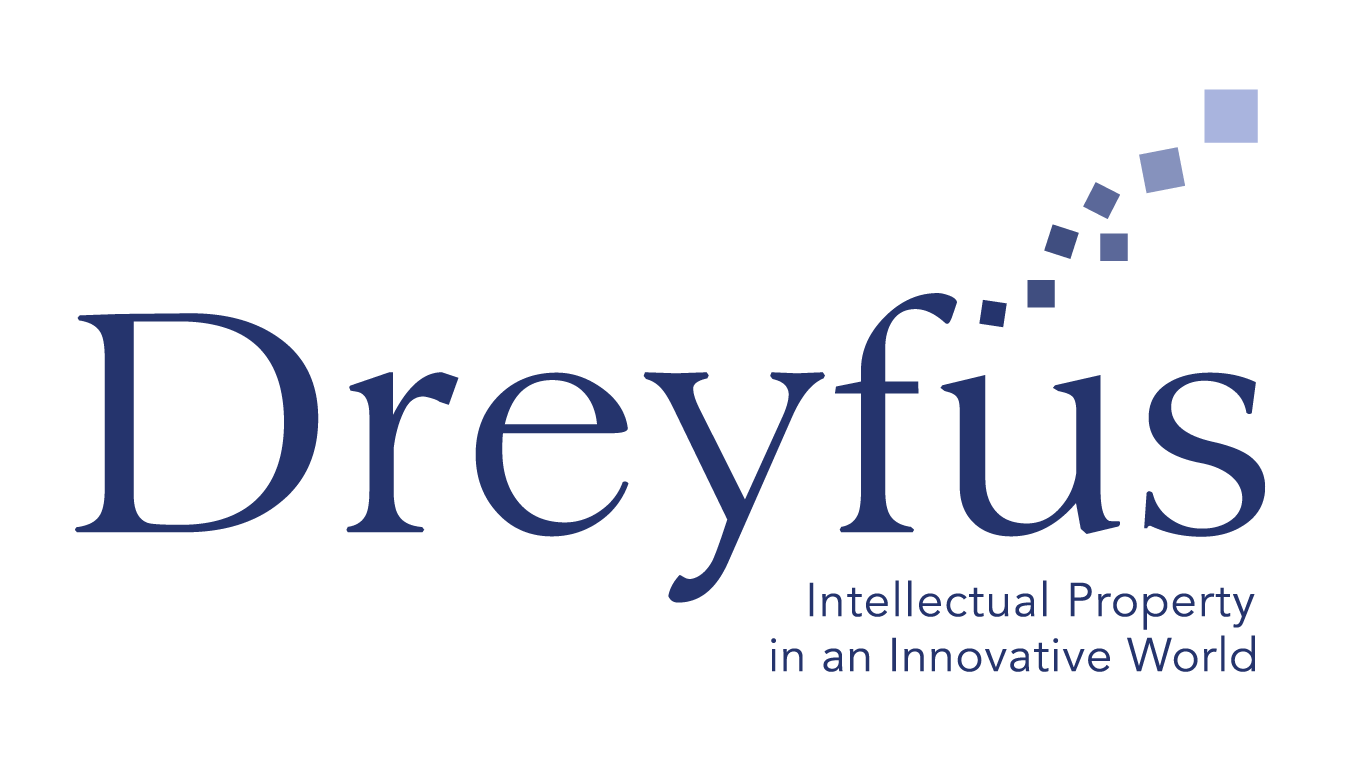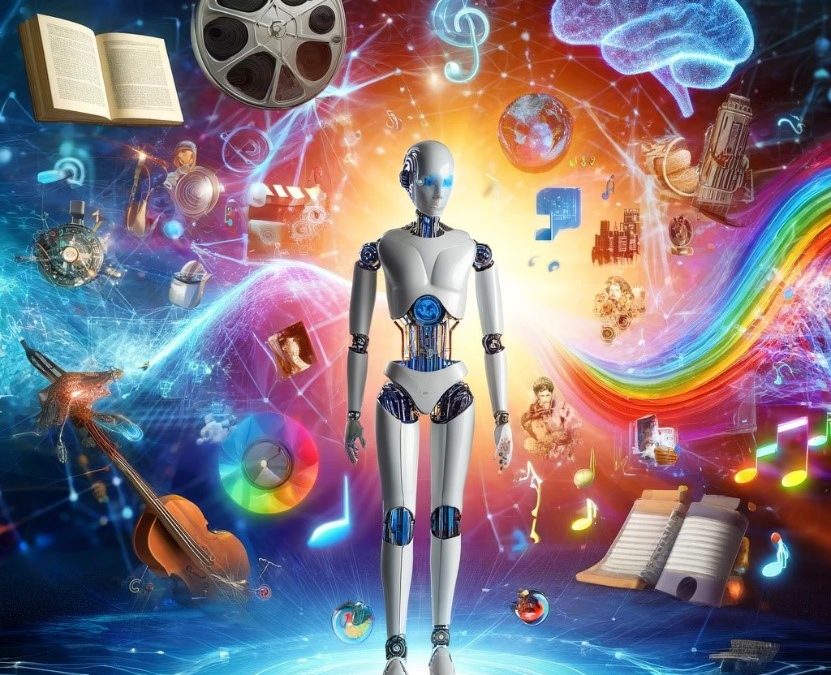Image generated by DALL E 3 Microsoft version
The integration of artificial intelligence (AI) into the cultural sectors represents a major revolution, profoundly affecting cultural creation, production and consumption. Based largely on the use of large bodies of data and advanced algorithms, AI is being deployed through a variety of applications, whether they emanate from renowned research centres, major companies or innovative start-ups. Each application, depending on its objective, employs specific techniques and types of data. However, behind the generic term ‘data’ lie very diverse realities, each governed by legal frameworks that can vary significantly – notably personal data, public data and data relating to works.
The use of AI in the cultural field therefore raises complex legal issues, particularly in terms of copyright. For example, when a work is announced as being created by AI, the question immediately arises as to whether it qualifies as a work of the mind and is therefore potentially protected by copyright. Who, then, is considered to be the author? Is it the AI itself, its programmer, or the entity using the technology? In addition, the way in which AI learns and creates from existing works may require rethinking access to this data from a legal perspective, while taking into account the implications for rights holders.
This complexity is exacerbated by the use of metadata and usage data in AI, which, although crucial for predictions and recommendations within cultural industries, are not always clearly governed by intellectual property provisions. This poses major challenges in terms of data circulation and sharing, which influence not only professional practices but also economic and creative balances within the cultural industries.
Thus, by adopting a European perspective, it is imperative to consider regulatory solutions that take account of specific cultural characteristics and economic needs, while protecting the interests of creators and consumers in a constantly changing digital environment.
On 27 January 2020, the Conseil Supérieur de la Propriété Littéraire et Artistique (CSPLA) presented its report on the legal and economic challenges of artificial intelligence (AI) in the cultural sectors. The report, chaired by Professors Alexandra Bensamoun and Joëlle Farchy, provides a detailed overview of the challenges posed by AI in the cultural field, while taking into account a European perspective.
The report is divided into four main sections:
- The use of AI in the cultural sector at different stages of the value chain
- The status of cultural products generated by “creative” AI
- The regime for works enabling the production of cultural creations by AI
- Improving data sharing to meet the challenges of AI development
The use of AI in the cultural sector
The report explores the many applications of AI throughout the cultural value chain.
In addition to work-related data, other categories such as usage data and metadata are also used in the cultural industries, playing a crucial role throughout the value chain in creation, production and consumption.
In the cultural industries, AI uses a rich typology of data to improve various tasks. For example, AI is already being used on a massive scale to recommend content to Internet users, thereby optimising cultural consumption.
However, this use is giving rise to debate, particularly about the creation of “filter bubbles” that could limit users’ exposure to a diversity of content. According to the CNIL, this is a phenomenon that occurs when an algorithm is set to propose only results that correspond to a user’s known tastes, so it will never go beyond known categories.
Moreover, AI applications are not limited to content recommendation. They also play a crucial role in cultural production, providing a detailed analysis of market trends and helping to make investment decisions. This enables producers to base their decisions on objective data rather than human intuition.
In this way, these technologies not only reproduce existing approaches but also make it possible to discover unexpected relationships between data, improve the personalisation of cultural experiences and push back the boundaries of artistic creation. However, their integration raises important questions about data protection, intellectual property and ethics, requiring increased regulatory and legal attention to balance innovation with respect for existing rights in the cultural sector.
The legal status of AI-generated cultural products
The intersection between artificial intelligence (AI) and copyright raises complex and fascinating questions. At a time when AIs are increasingly capable of generating autonomous creations, the question of their legal status is becoming pressing. The traditional designation of a human author is becoming more complicated with works potentially created without direct human intervention, which calls into question copyright, which is intrinsically linked to human creation.
On the one hand, AI can be seen as a tool at the service of human creativity, facilitating the creation of cultural works. However, when human intervention becomes marginal, the question of whether these AI-generated works can be protected by copyright arises acutely. The distinction between AI-assisted creation and autonomous creation is blurred and difficult to draw. Historically, copyright only applies to works where a personal human imprint is discernible.
Current debates focus on the possibility of adapting copyright law to incorporate these new forms of creation or developing a specific legal regime that would recognise the particularities of AI.
Alternative solutions being considered include the creation of a special copyright or a sui generis right, enabling these works to be protected without necessarily qualifying them as traditional human creations.
Some voices suggest that AI-generated works should not be protected by private rights, arguing that this could stifle innovation. The report analyses the implications of this approach for the market and for traditional creators.
In other words, the relationship between AI and copyright requires careful consideration to balance the interests of human creators, incentives for innovation, and cultural and economic rights in the digital society.
The regime of works feeding creative AI
Deep learning is based on the extensive use of data, often extracted from works protected by copyright. This use raises the question of whether the breakdown and analysis of these works by artificial intelligences constitute an exploitation subject to copyright. European Directive 2019/790 introduces an exception for data mining that facilitates the use of AI while allowing rights holders to reserve their works against such exploitation. This legal framework attempts to strike a balance between technological innovation and copyright protection, but raises questions about the effective management of reproduction rights.
The report by the Conseil Supérieur de la Propriété Littéraire et Artistique (CSPLA) addresses these issues in detail and proposes potential solutions for balancing the needs of technological innovation and the protection of authors’ rights, in particular collective licensing mechanisms.
These licences allow a collective management organisation to authorise the use of works that it does not necessarily represent directly, provided that the organisation is deemed to represent the interests of the rights holders concerned. However, rightsholders retain the right to withdraw their works from the collective licence scheme at any time.
While these licences make it possible to considerably simplify the process of acquiring the rights needed to use large quantities of works, by avoiding the need to negotiate rights with each owner individually, they also enable collective rights management that ensures that authors receive compensation for the use of their works.
However, beyond the complexity of their implementation, the scope of extended collective licences may be limited by issues of territoriality, which may reduce their effectiveness in a globalised context such as that of the Internet. What’s more, such an option would probably ultimately force rightsholders who are definitively opposed to TDM to opt out twice (to escape TDM and to extract themselves from collective management).
Improved data sharing for the development of AI
Artificial intelligence is seen as a lever of power in the future digital economy, its ability to process vast quantities of data being crucial to its development. Managing access to data, especially when it is linked to works protected by intellectual property, raises important questions about the compatibility between the expansion of AI-based business models and respect for intellectual property rights.
In the cultural sector, the sharing of data, which is not always directly linked to intellectual property, nevertheless remains essential. Regulation, such as EU Regulation 2018/1807 on the free flow of non-personal data, as well as various European initiatives, encourage this sharing and aim to balance access to data between the various players.
As for the future of data sharing in the cultural sector, several approaches are being considered, including cooperative initiatives for shared data management, contractual arrangements between companies, and regulations that facilitate access to essential data, to encourage transparency and innovation while respecting the rights of creators and the privacy of users.
Conclusion
The CSPLA report highlights the challenges and opportunities that artificial intelligence brings to the cultural sector. It highlights the importance of appropriate regulation to encourage innovation while protecting creators’ rights. Legal professionals have a key role to play in accompanying these transformations and ensuring a balance between technological development and respect for intellectual rights.
Dreyfus can offer expertise on Copyright and AI matters
Feel free to contact us and Join us on social media!

